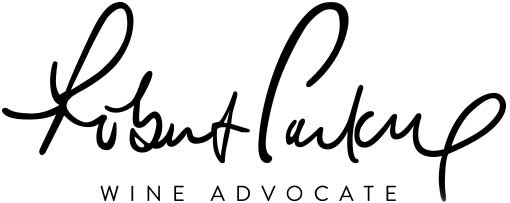Parker über:
Sammlerbox: Vintage Port Jahrgangs-Trilogie
-- Parker: Parker zu 2016: The 2016 Vintage Port Vale D. Maria is a field blend from various vines ranging from 30 to 80 years in age. It was aged for six months in stainless steel and 14 months in old oak vats. It comes in with 102 grams of sugar. This is the first look in bottle, and it is the current release in the marketplace, although the 2017 (reviewed in the July 11, 2019, interim issue) will be out soon. I loved this when I first saw it. It was powerful and tightly wound with lifted fruit. That still describes it. At that point in its life, though, it was overwhelmed by the power. A year or so in the bottle has changed that demeanor dramatically and made it easier to see what we have. The tannins have moderated to some extent—although this still has plenty of power, so don't misunderstand. It still tightens notably with aeration, and there's plenty of tannic pop four days later. Leaner than the 2017 recently reviewed, it compensates with its graceful demeanor and laser-like precision that makes it perfectly focused. The dry fruit seems stern and brooding, but it opens with air. It is always very persistent. The aromatics are classic. Overall, this nicely crafted Porto is still lovely, still improving, and it has a long life ahead. It would help if you left it in the cellar for another decade or so. 95/100Parker zu 2017: The 2017 Vintage Port Vale d. Maria is a field blend from various vines ranging from 30 to 80 years in age. It was aged for six months in stainless steel and 14 months in old wood. It comes in with 101 grams of sugar. This was originally seen as a tank sample just before bottling in June 2019. It starts off with an inky black color that seems to suggest that it is the pure essence of fruit—and that is exactly how it tastes. The signature here is always going to be the intense fruit flavor, but all of that sexy fruit is nicely lifted on the finish. It's laced with blackberries and cherries, and it just tastes great. The mid-palate is on the elegant side, showing average depth. This shows finesse more than jamminess, as did the 2016. The tannins are moderate too, although there certainly are some, and this shows far more power with aeration after a soft beginning. There is eventually a lot of pop. (I won't be surprised if this closes down.) The finish is juicy and chock-full of flavor. It is sort of accessible now, but that is not going to last. This looks much more promising (and certainly sexier) than it did when I saw it in Porto. It may yet equal the astringent 2016, or surpass it. This seems to have better fruit, but the 2016 has plenty of bragging points, including its power and precision. Of course, as I said the last time, the balance with this 2017 might just be different—with the big fruit more easily matching the tannins and making it seem a bit less rustic. This certainly continued to show well over the course of a week. (And it needed some time, as its opening was not that impressive.) It will be interesting to see what happens when the intensity of fruit flavor fades here. Still, it seems increasingly special. Whether I just underrated it on the first look (mea culpa) or it is in a better place now, or both, it deserves an uptick. It should improve in the future. There were 6,500 bottles produced, plus 150 magnums. 94+/100







